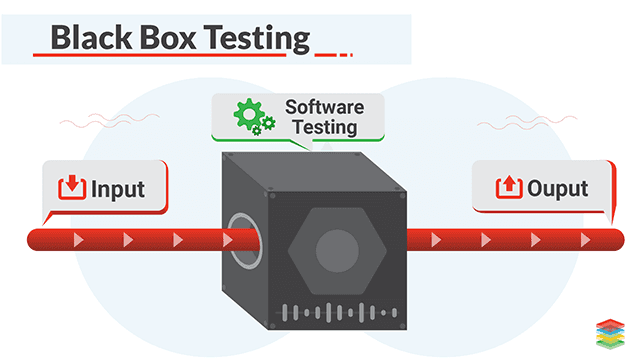
What is Black Box Testing?
Black Box Testing is referred to as a Behavioral Testing. It is a software testing method where internal structure /design/implementation of the item tested is not known to the tester. It is a method which tries to find an error in the following categories -- Incorrect or missing functions.
- Interface errors.
- Errors relative to a data structure or external database access.
- Behavior or performance errors.
- Initialization and termination errors.
Load testing can be defined as putting a demand on a system and measuring for performance. Click to explore about, Continuous Load Testing
What are the its various types?
There are three different types of testing available depending on requirements and specifications.
- Functional-Testing - It is related to the functional requirements of a system, and software testers mainly execute it.
- Non-functional Testing - It is related to testing of specific functionality but nonfunctional requirements such as performance, scalability, and usability.
- Regression Testing - It is executed after fixing issues of code and upgrades or any kind of system maintenance to check that new code did not affect already existing code.
What are the advantages of Black Box Testing?
Black Box testing Advantages are explained as follows -- Tests were done from the user's point of view and detect that each specification working to user requirements.
- Testers need not be aware of programming languages to do this type of testing if the manual way of testing chosen.
- Tests conducted independently.
- Test cases designed as soon as specifications for design completed.
- This type of testing referred to as UI based testing because, after completion of UI, Black Box testing possible.
A process to check the system accepts the requirements of a user or not. It's performed at a time when the system used by actual users. Click to explore about, User Acceptance Testing
Why it is important?
First of all the requirements and specifications of the system should be clear to perform the testing execution. Choose valid test case sceneries (positive test case sceneries), and invalid test case sceneries (negative test case scenarios) to verify System under Test (SUT). Determine an expected output for each input. After defining test cases, define an input value along with test cases required to run test cases. Execute test cases one by one along with defined values on a SUIT (System Under Test).
Then after the execution of test cases, the actual result value is compared with expected result values defined above. If after comparison of actual and expected result any difference found then in case, there is a requirement that bug fixed by the development team. After fixation of bugs, all the test cases re-executed, and the whole process is repeated. This process repeated till a time all test cases not executed.
What are the various techniques of testing?
The various techniques of Black Box Testing is described below:
- Equivalence Partitioning - It is a software test design technique that involves dividing input values into valid and invalid partitions and selecting representative values from each partition as test data so that tests made by these values.
- Boundary Value Analysis - It is a software test design technique that involves the determination of boundaries for input values, then select values that are at the boundaries. Also, select values that are at inside/outside of boundaries as test data.
- Cause-Effect Graphing - It is a software test design technique that involves identification of cases (input conditions) and effects (output conditions), producing a cause-effect Graph and also the generation of test cases according to that.
What are the best practices of software development life cycle?
Black box testing has life cycle known as a Software Tester Life Cycle (STLC), and it is also relative to every stage of the software development life cycle. It contains some phases explained as follows -
- Requirement - It is an initial stage of SDLC and in this state requirements gathered. Software testers take part in this stage of the life cycle.
- Test Planning and Analysis - Due to different testing types available, the best testing type applied to the project determined. After choosing an effective testing type, test plans created to determine possible project risks and also their mitigation.
- Test Execution - In the final stage, if testing test cases prepared executed. Bugs are fixed and re-executed.
The quality assurance and software testing process of software development is as necessary as the actual code had written. Click to explore about, Software Testing Best Practices
Best Tools for Black Box Testing
Testing tool categorized into different categories mentioned as following -
- Functional / Regression Tests - To do Functional testing following tools used such as QTP, Selenium.
- Non-functional Tests - To do Non-Functional testing following tools used such as Loadrunner and Jmeter.
Concluding
In conclusion, it's all about to test the external functionality of software and application. It never checks that application or website producing correct or incorrect results after providing input. It checks that application or website working efficiently after providing input to the system.To know more about various Testing techniques we recommend taking the subsequent steps- Read more about System Testing Types
- Discover more about AI in Software Testing
- Explore about our Big Data Testing Solution Offerings
.webp?width=1921&height=622&name=usecase-banner%20(1).webp)


